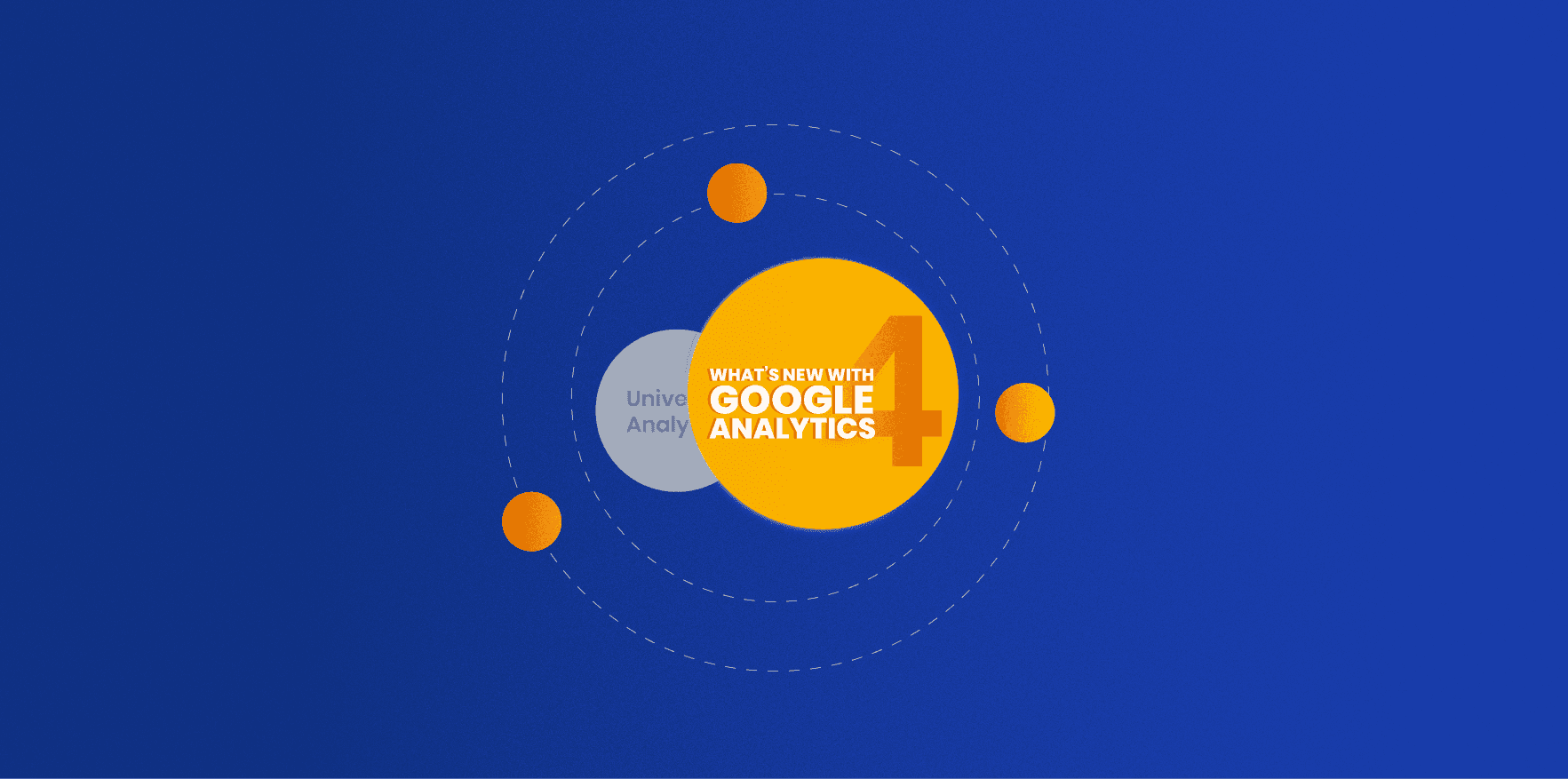
Performance
Google Analytics 4: What's New and Why It Matters
Growth Insights
Tracking

Alex Coupe
May 16, 2023
With July fast approaching, it's time to get ready for a big change. As the sun sets in Spring, it also sets on Google's Universal Analytics (UA). Since UA launched in 2012, it's become a staple part of the digital marketing landscape and something that marketers all over the world have come to love/tolerate. This major update is, therefore, one that will have major effects on the way digital marketers work.
Google Analytics 4 (GA4), the latest version of the service, is designed to provide a more flexible and user-centric approach to data collection and analysis. But why did Google feel it was the right time to update Analytics? And what are the core differences between UA and GA4?
We're here to break down the context surrounding Google's big Analytics update and tell you the 5 big changes you need to be aware of.
Why is Google making these changes?

GA4 is filled with changes, and offers a host of new reporting metrics and analytical abilities, but why did Google feel that now was the time to update Analytics? Ultimately, Google needed to adapt to the changing digital landscape and user behavior:
Privacy:
Public concerns about data privacy have been increasing in recent years due to high-profile data breaches, increased use of personal data by companies and governments, and greater awareness of how personal data is being collected and used. As a result, countries and companies have introduced new data protection regulations or updated existing ones to better protect individuals' data.
Apple's iOS 14.5 update, regulations in Europe, and data policy changes in other territories have all sought to appease these concerns; granting users more control over the collection and use of their data by giving them the ability to accept or refuse cookies and tracking by online businesses.
With that being said, businesses must take action to align with this shift in the digital landscape and comply with these changing data privacy rules.
Changes in User Behavior:
One of the reasons that users are becoming more conscious of their digital privacy is the increasing number of touchpoints they have with businesses online. There is no longer a single touch point between brand and consumer: interactions occur across multiple platforms on multiple devices at an increasing frequency. Purchase decision time has been increasing for many years, as people use the increased internet accessibility for more comprehensive product or service comparison. As such, there is a growing need for 360 degrees to track longer-term user behavior across the variety of spaces they interact with businesses.
Technological Advancements:
Recent developments in digital technology, particularly those in the fields of AI and machine learning, offer opportunities to increase the accuracy and efficiency of data analysis and automate manual tasks. These developments have increased user expectations of analytics platforms - businesses now want predictive analytics and automation, not just tracking and reporting.
5 Core Changes in GA4:
1. Granular, Event-based Tracking:
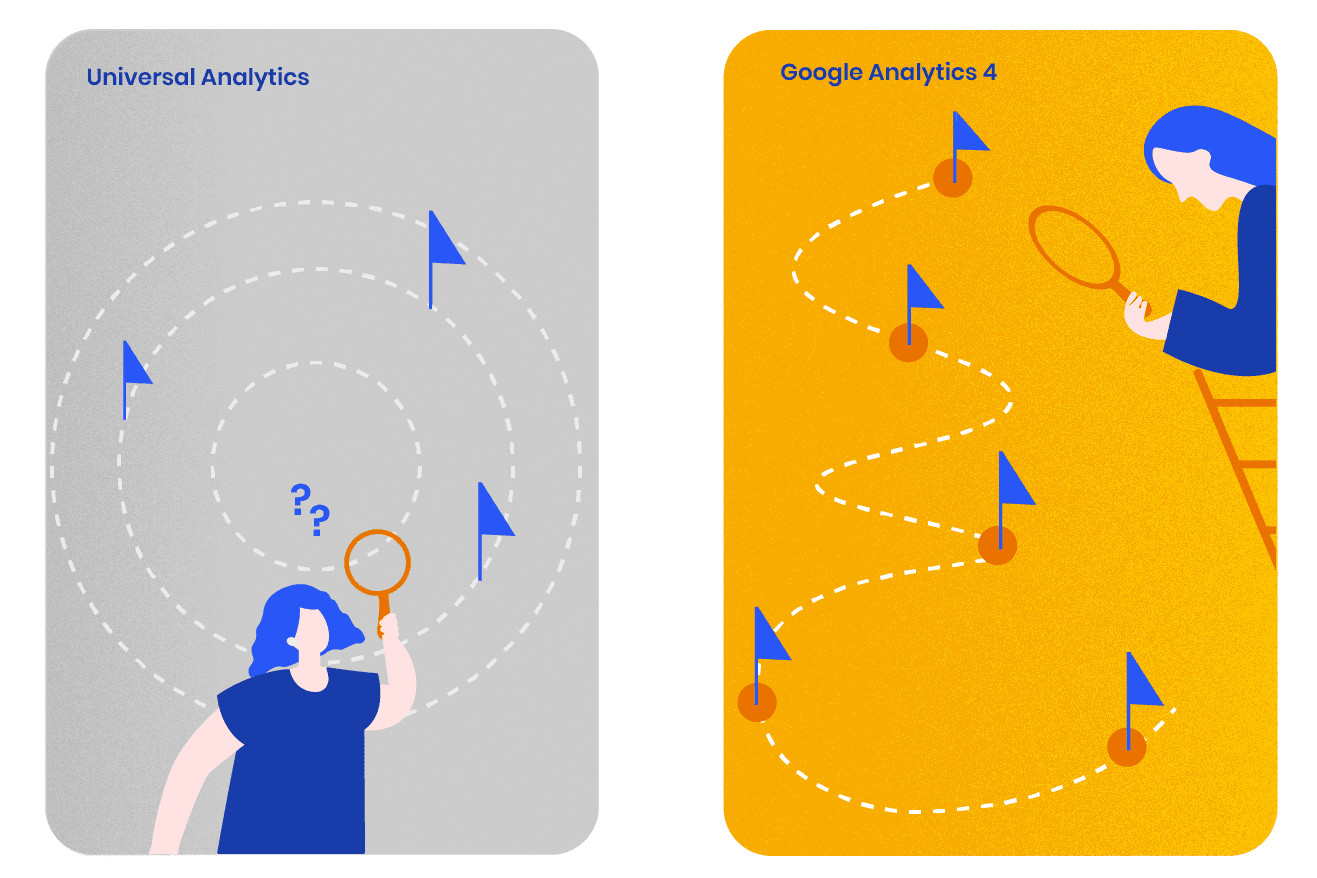
GA4's new event-tracking model allows you to track any user interaction. This allows for more granular tracking of user behavior, and shifts focus away from e-commerce, allowing any online business to track the interactions that matter to them.
In UA, data was always tracked as "hits": predefined data points that were sent from the website to UA. If the data you wanted to collect fell outside of these pre-set parameters and your team didn't implement tracking, then bad luck because you wouldn't be able to collect it.
In GA4, however, you can track almost anything you want. Certain data (such as page views and clicks) is still collected automatically, but GA4 allows you to turn on "Enhanced measurements" (including like "video engagement" or "file downloads") and create Custom Events to track any specific occurrence that happens on your site: from clicking a button to submitting a form, to scrolling a gallery of images.
Bear in mind the importance of Google Tag Manager (GTM) in tracking custom events. If you want to monitor specific events that aren't auto-tracked by GA4, such as button clicks or video plays, you'll need to set up custom tracking manually using GTM.
2. More Comprehensive, User-centric Reporting:
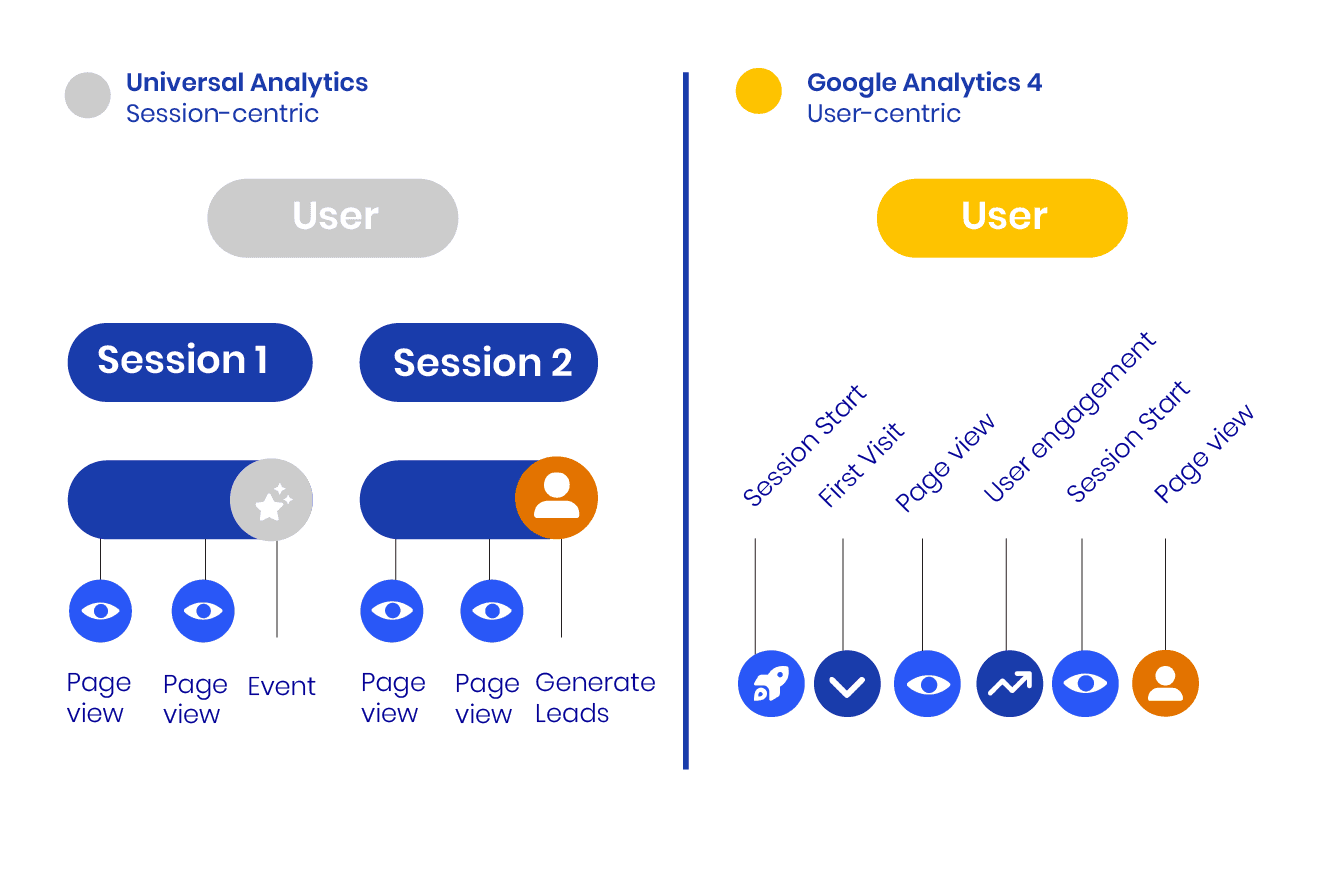
One of the major pitfalls of Universal Analytics is the inability to track user activity across multiple sessions on multiple devices. Hence, GA4 is designed to solve these issues.
Critically, GA4 utilizes a more holistic, user-centric reporting model. This provides a comprehensive view of each user, rather than each site session. As a result, businesses can track and report on the long-term user journey across multiple touchpoints on multiple devices.
With more and more people using different devices interchangeably, this update addresses the needs of businesses that require a more cohesive view of user behavior and activity across devices and platforms. In GA4, desktop, tablet, and mobile activity can be placed in the same property and reported cohesively. Cross-domain tracking is also built-in and easier to set up.
Reports in GA4 have also been simplified and reorganized to differentiate new user acquisition from overall traffic acquisition and engagement. Campaign analysis is also found in a separate "Advertising" section.
Furthermore, the new Explore feature is a sandbox tool for more granular analysis, allowing us to create and analyze specific marketing and sales funnels. All of these new features and updates lend themselves to the creation of more comprehensive, flexible insight.
3. Last Click vs Data-Driven Attribution:
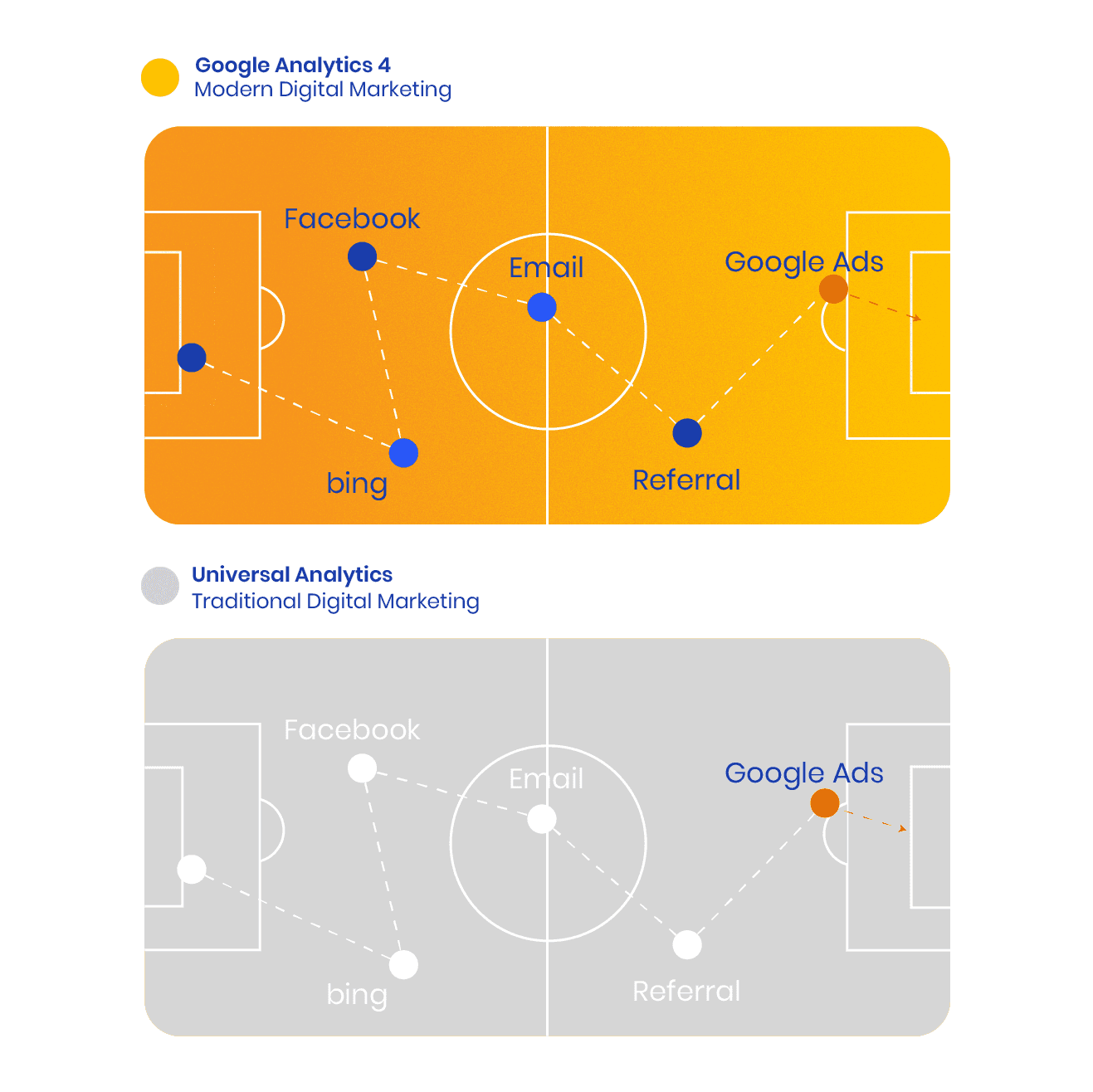
The shift to user-centric reporting also alters the attribution model of events or conversions, allowing for a more holistic, data-driven analysis of user behavior.
UA's session-centric measurement model only tracked which and how many sessions generated conversions - it didn't consider the user's long-term journey leading to the conversion.
In GA4, however, you can attribute events to more than just the last click.
User-centric reports enable you to identify and understand every stage of the user's interaction with your business: each interaction between your business and the user accumulates towards the final event, whether that's a sale or something else.
We've found that the best way to understand the potential of the GA4s measurement model is to imagine your marketing campaign as a football team, with each component (Facebook, Email outreach, Referrals, Google Ads, etc.) as a player.
If you think of the final event as a win for your team, then the session-centric model only attributed that win to the player that scored the winning goal - the last click.
GA4, however, attributes the win to the entire team: each interaction that the customer had with the business before the winning goal. Argentina won the world cup, not just Messi - your entire campaign is what generates a conversion, not just the last click.
4. AI-powered Trend Analysis and Recommendations:
GA4 incorporates more advanced machine learning and predictive analytics, which allows for more accurate insights and automated actions.
GA4 uses AI to offer data-driven predictions for individual users and for your site as a whole, including purchase probability, churn probability, and predicted revenue.
It also automates the creation of data insight reports when the machine learning algorithm identifies notable changes in the data stream, such as spikes or dips in events (i.e. sales).
These tools enhance the ability of businesses to rapidly adapt to changes in user behavior, or identify areas where they can make alterations to increase the probability of conversion or predicted revenue.
5. Deeper integration with Google Ads:
One of the key focus points of GA4 is on providing businesses with a 360-degree view of user activity across all touchpoints. GA4's updated integration with Google Ads helps to create this more holistic view of the user journey.
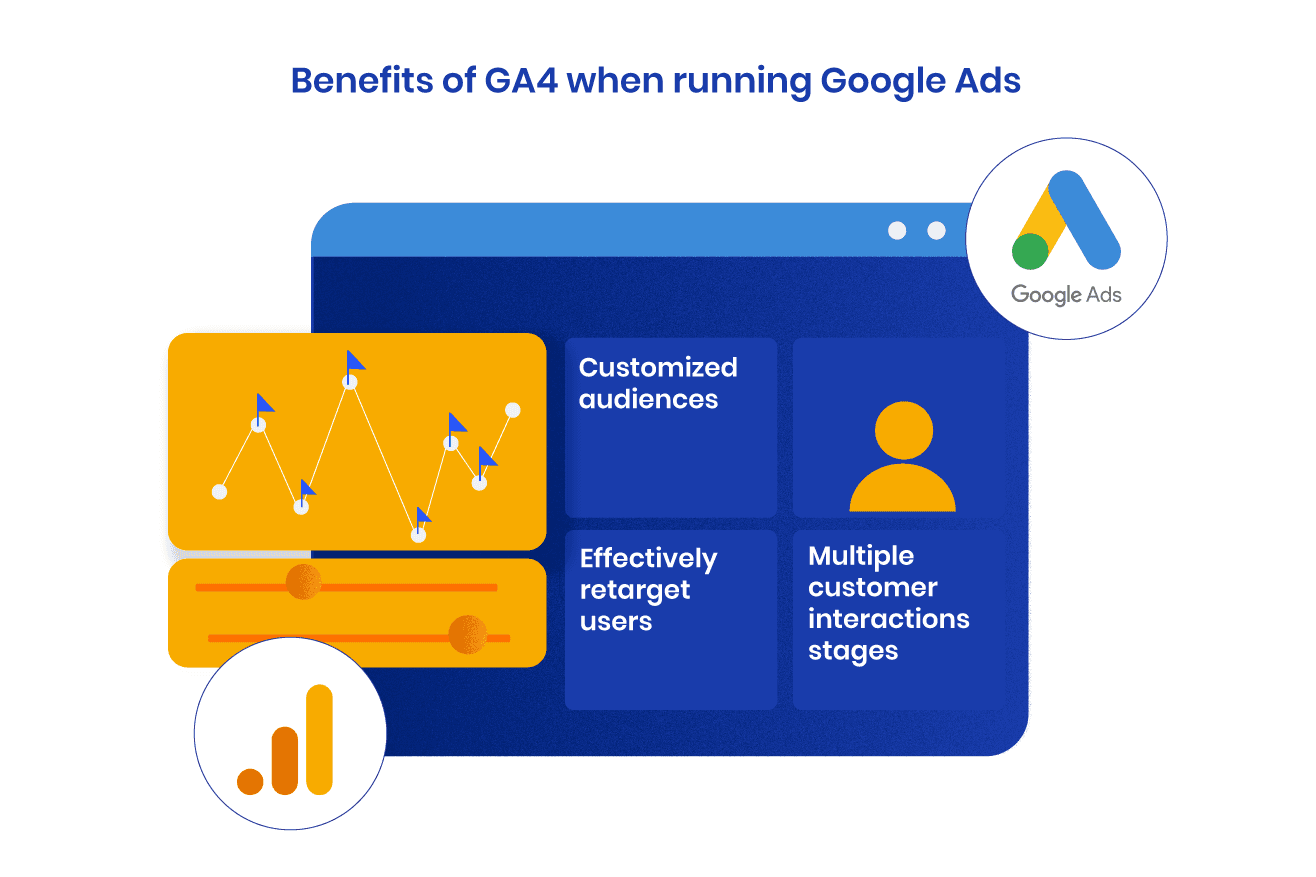
A Google Ads integration was available in Universal Analytics (UA) which allows advertisers to import last-click data from Google Ads into their UA account and analyze the performance of their ad campaigns within the UA platform.
GA4's integration with Google Ads provides a more complete view of the customer journey than UA. Unlike UA, GA4 imports conversion credit into Google Ads whether or not the ad itself was the "last click". This allows users to attribute conversions to their PPC campaigns if interactions occurred earlier in the user-customer journey. As a result, users gain a more holistic view of the entire customer cycle as conversion credit is attributed across the multiple stages of customer interaction with a business.
GA4 also offers an updated integration with Google Ads that provide additional audience segmentation capabilities -enabling businesses to use GA-acquired user data to create more customized audiences and retarget users more effectively.
Conclusion
The world is changing fast, and Google has adapted its Analytics platform to this new reality with a plethora of changes designed to provide businesses with a more holistic view of user behavior across different devices and touchpoints. GA4 also includes critical updates to ensure data privacy and regulation compliance for users and businesses respectively.
In future articles will delve deeper into the technicalities of GA4 effectively, but hopefully, this article has helped you identify why the platform has changed and how it might affect the way you work with it.
Getting used to GA4 is going to take some time, but the best way to get to grips with all the updates and changes is to start using them.
Want to keep updated on all things performance? Join our Slack channel to be the first to hear industry news and insight directly from us!
Join the talk!
Stay on top of digital marketing innovation thanks to the insights from our internal Slack.
We post everyday!


